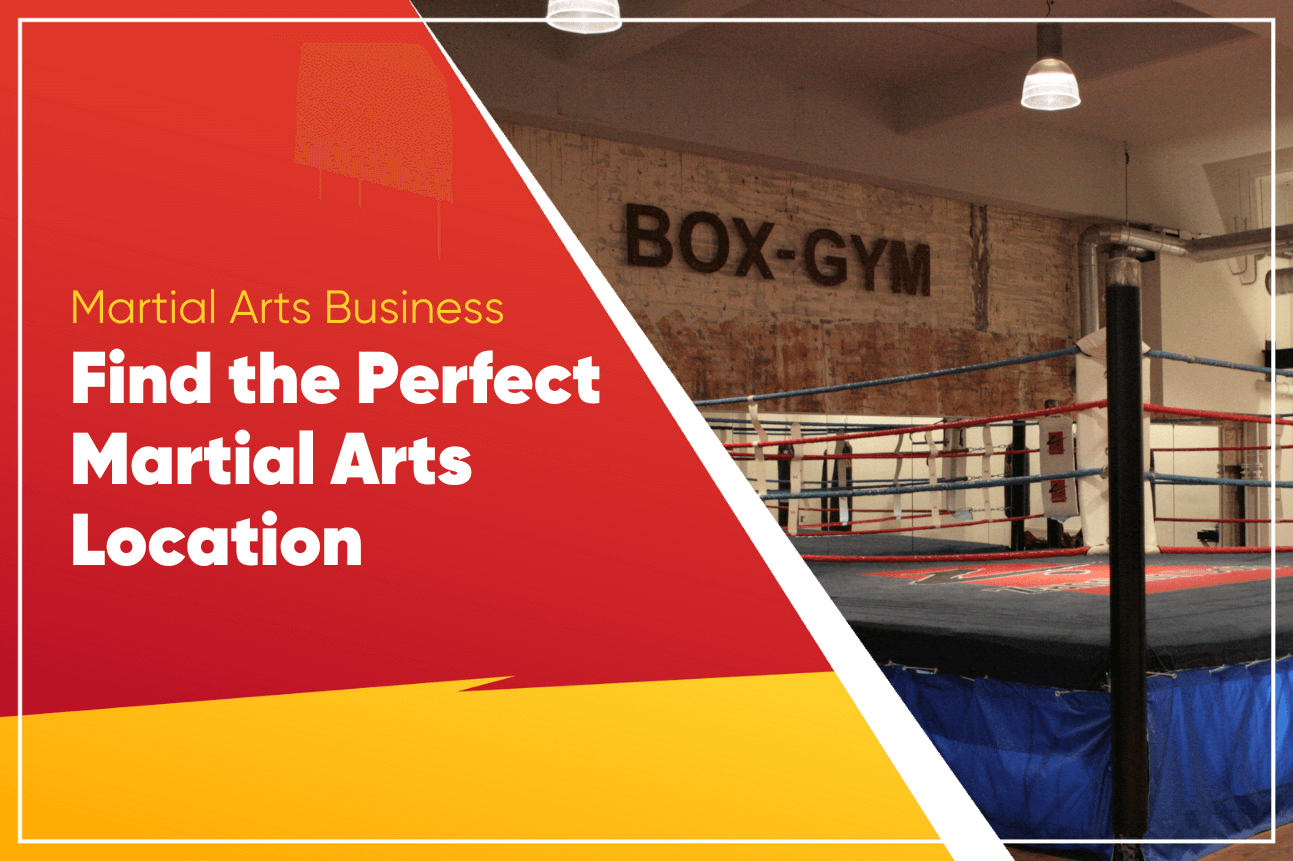Choosing a good location is critical to the success and profitability of your martial arts business. And on the whole, it’s by far the most expensive part of the business’s overhead expenses, which makes it among the most important decisions you will make for it. For that reason, it’s important that you employ a strategy that allows you to find and consider all the opportunities available to you in your area.
In this article, we’ll equip you with some strategies and facts that will help you find the best location for your martial arts program.
Storefront vs Non-Storefront Locations
Storefront locations are among the most popular and obvious choices for martial arts schools, especially ones anchored by a major shopping center. The downside here is that these spaces are often extremely expensive, even for a relatively small amount of square footage. However, if you charge enough, have multiple income streams, and can manage in a relatively small space for the sake of keeping overhead costs down, you can make it work. Read our article on martial arts startup costs to learn more about this.
The alternative is to find a non-storefront location, such as space in an old business park, warehouse, or industrial area. This often allows for much cheaper rent, and larger training areas, but the trade off is usually a lack of visibility and foot traffic. Parking can sometimes be an issue as well. With good marketing, you can generate all your leads.
The tradeoff here is chiefly between visibility and cost. Are your marketing and community presence strong enough to counterbalance the benefit of street-visibility and foot traffic? Or if you go the storefront route, is the foot traffic enough to counterbalance the cost of leasing such a premium space?
At the end of the day, you’ll need to look at the financial projections in your business plan and figure what your numbers need to be in order to comfortably afford the location you choose. To learn more, read our article on how to write a good business plan for your martial arts school.
Use Real Estate Websites
The easiest way to scope out commercial spaces for lease in your area is to run a few quick searches. Dozens of property websites exist and new ones seem to pop up every so often. A few popular ones include:
- LoopNet
- Crexi
- City Feet
- Showcase
You can also search the websites of property management companies local to you. All these websites allow you to get an idea of what each location wants for rent, tenant amenities, and square footage available without you ever leaving your home. Most useful is that they allow you to directly context the agents who handle those properties.
Sometimes an online search is enough to find the location you need, but it usually isn’t. It’s a great place to start, but you’ll need to use the strategy found in the next section to find the best place for you to open your school.
Snoop Around Town
A lot of available spaces for lease are not listed online, so snooping around the shopping centers in town will unearth dozens of opportunities you wouldn’t have known existed. Drive through all the usual spots, but make sure you fan out in ever widening circles to discover more potential locations opportunities.
Around the North Carolina suburbs, for example, you can sometimes find seemingly random buildings and tiny old strip malls with available spaces only a few minutes outside the main part of town just by driving the backroads.
Don’t be afraid to call up the real estate companies or agents listed on available storefronts. You aren’t obligated to them simply for collecting information. More importantly, if a location is too expensive or doesn’t fit your needs, agents often represent more than one location in the same area and can maybe suggest a better fit.
Common & Uncommon Location Possibilities
It’s easy to miss opportunities right in front of your eyes if you never thought they could be opportunities in the first place. For that reason, I’ve compiled a list of both common and uncommon places where you can find space for your martial arts program:
- Gyms. Big box gyms often have multipurpose rooms that can be outfitted for martial arts training. Each manager or owner will have their own policies, but I’ve spoken to a couple who were open to hosting martial arts clubs inside their facilities. There’s also boutique fitness gyms, like CrossFit and various bootcamp franchises, and many local brands. I spoke to one who was willing to let me host a taekwondo club during his dead hours, so don’t strike these off your list either.
- Gymnastics Centers. These facilities are often large and can often host more than one program during the same time slots. Gymnastics centers will often host dance and cheer classes as well, so they’re used to negotiating with other businesses to use their facilities.
- Community Centers. While used more so for meetings where people sit down and use tables, they’re designed to be moved around and you can often stack the chairs and stow away the tables to create space for a martial arts class.
- Recreation Centers. These are often taken up by existing programs already, but are excellent for hosting your martial arts classes if you can snag a spot.
- Yoga Studios. Some yoga studios have off hours or aren’t open all week, which could be an opportunity for you to sublet some space for your class.
- Dance Studios. Dance studios are often booked up, and if you teach children in your martial arts classes, they might view you as a threat. But if the conditions are right, dance studios might have space and time slots for you to use.
- Sport Clubs. I trained with a Brazilian jiu-jitsu group that had rented most of the 2nd floor of a tennis club. Larger sports clubs will sometimes have rooms large enough to conduct training in as well.
- Places of worship. Churches and synagogues often have gymnasiums and recreational facilities attached to them. More importantly, they’re often willing to rent them out for very reasonable rates.
- Public and private schools. Schools consistently have gymnasiums and sport-specific rooms. In fact, many have wrestling rooms already fitted with mats that might be available for rental during off hours and/or the off season.
- Community colleges. These institutions tend to be more accessible to the public than universities, and they are keen on hosting continuing education classes as well. Even if they don’t have a gymnasium, they can be willing to repurpose larger rooms to accommodate you. In fact, you can sometimes choose to teach as adjunct faculty for the college and use their liability insurance.
There are probably many more opportunities than these, but it requires getting out into your community and asking questions. Don’t be afraid to talk to people about what they’re willing to do, and don’t be afraid to blaze a path where there is no precedent.
Conclusion
Your location is one of the biggest decisions you can make for your new and growing martial arts school. In general, you have the choice between storefront and non-storefront property, each with their own pros and cons. To find out all the opportunities available to you, snoop around town for building leasing space and check a variety of established businesses and institutions to see if uncommon training accommodations can be made.
 Gym Owner Statistics: The State of Gyms, Member Trends, and Usage Data
Gym Owner Statistics: The State of Gyms, Member Trends, and Usage Data



